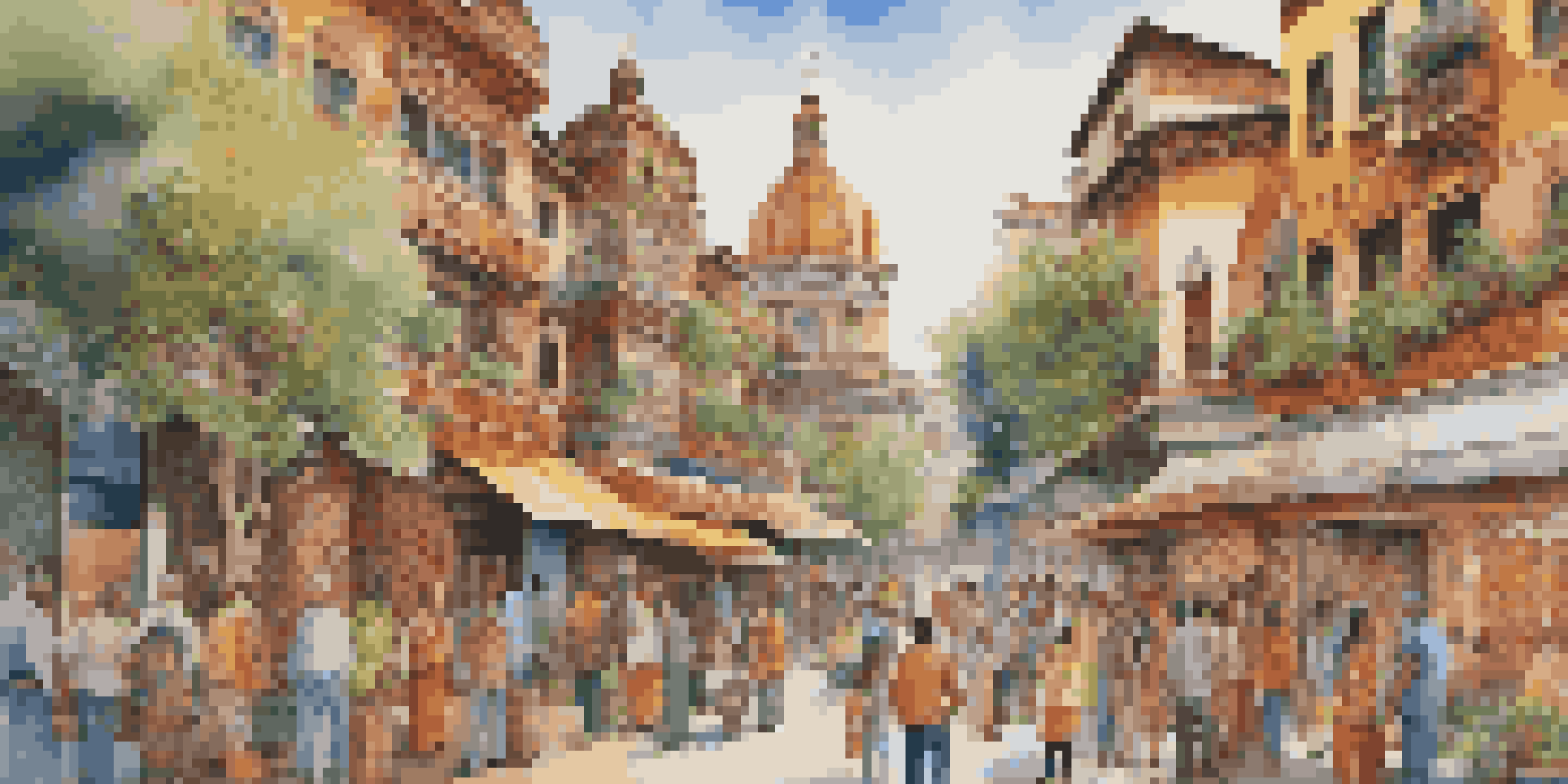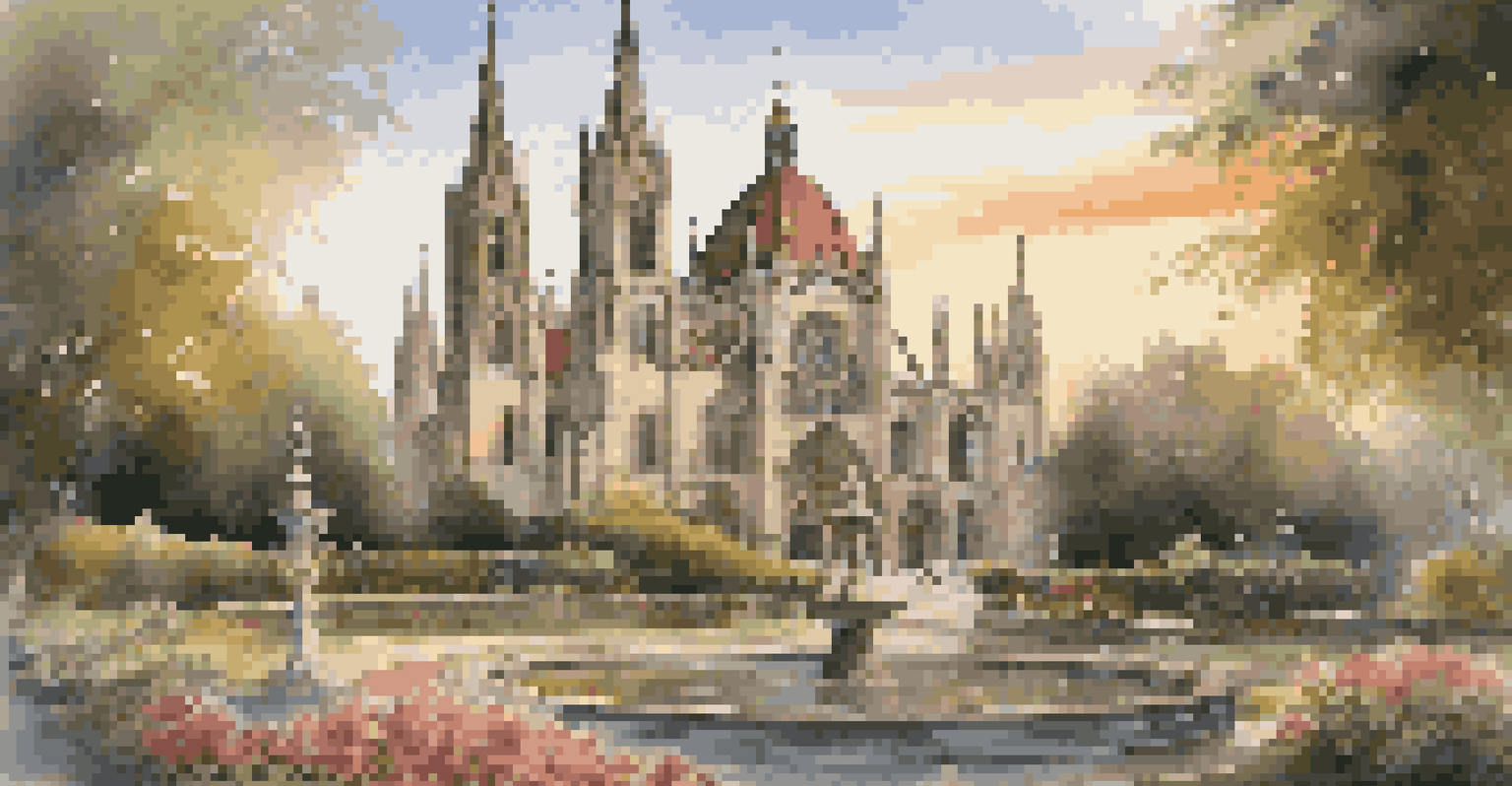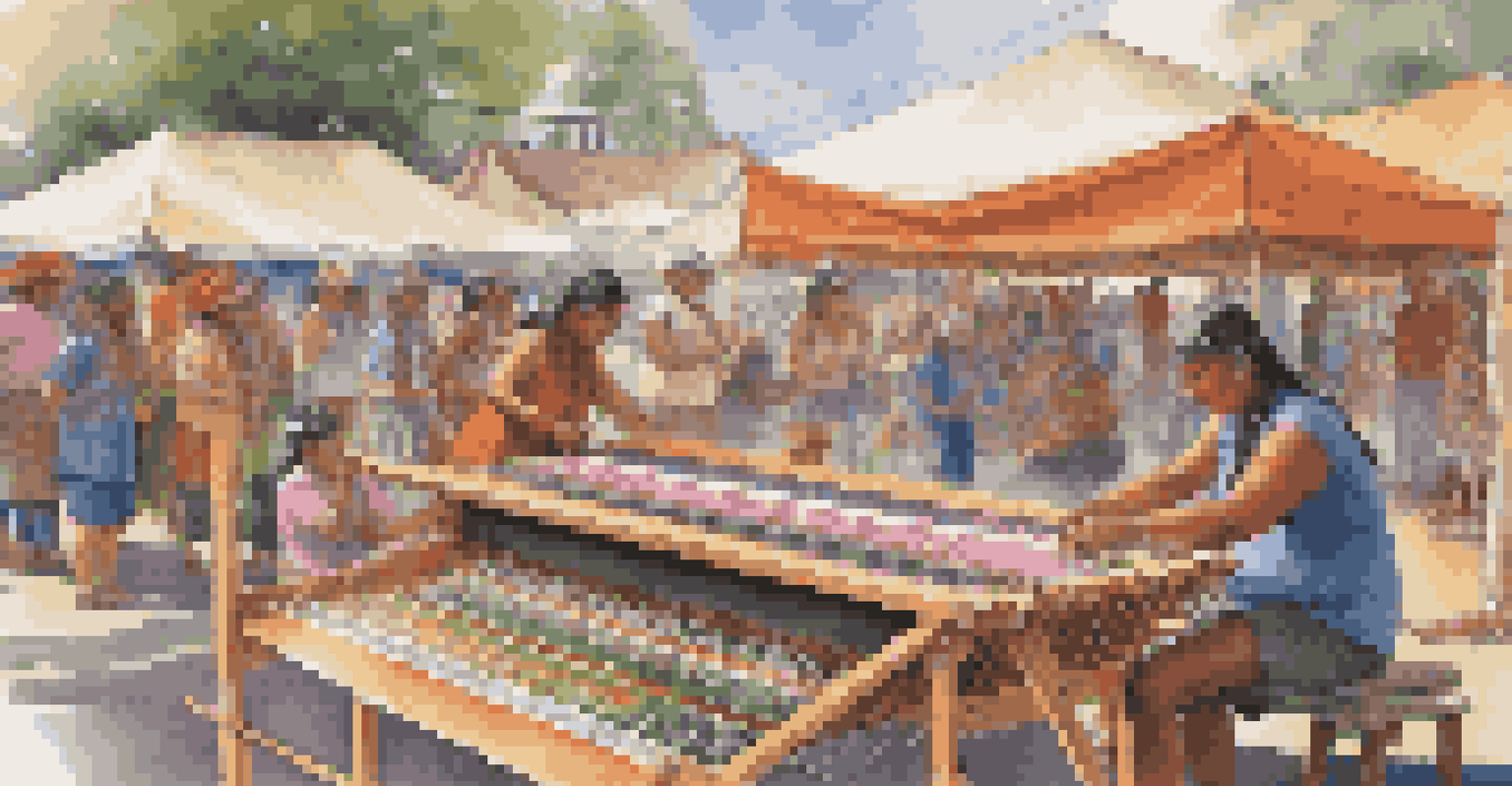Art and Architecture in the Context of Cultural Heritage

Defining Cultural Heritage: Art and Architecture Intertwined
Cultural heritage encompasses the traditions, artifacts, and practices that define a community's identity. Within this scope, art and architecture play pivotal roles, serving as mediums through which cultural stories are told. They offer a glimpse into the values, beliefs, and historical narratives of different societies.
Art is the most beautiful of all lies.
For instance, the intricate designs of Islamic architecture reflect the cultural and religious significance of the period, showcasing how aesthetics and spirituality intertwine. Similarly, Indigenous art forms often convey deep connections to land and ancestry, emphasizing the importance of cultural continuity.
By understanding art and architecture as integral components of cultural heritage, we can appreciate their contributions to shaping societal identity and fostering a sense of belonging among community members.
The Role of Art in Preserving Cultural Identity
Art serves as a powerful tool for expressing and preserving cultural identity. From vibrant murals to traditional crafts, artistic expressions capture the essence of a community's heritage. They not only celebrate historical events but also reflect contemporary issues faced by the community.

For example, the revival of traditional weaving techniques among Indigenous communities showcases a commitment to preserving ancestral practices while adapting to modern contexts. This blend of old and new fosters resilience and continuity in cultural identity.
Art Preserves Cultural Identity
Art acts as a vital means for communities to express and maintain their cultural identity, reflecting both historical and contemporary issues.
Moreover, art initiatives often encourage intergenerational dialogue, allowing younger generations to connect with their roots while fostering pride in their cultural heritage.
Architecture as a Reflection of Historical Narratives
Architecture stands as a physical manifestation of a culture's history and values. From ancient temples to modern skyscrapers, buildings tell stories of societal evolution, technological advancements, and aesthetic preferences. Each structure is a chapter in the broader narrative of human civilization.
Architecture is the learned game, correct and magnificent, of forms assembled in the light.
Take, for instance, the Gothic cathedrals of Europe, which not only showcase architectural brilliance but also represent the spiritual aspirations of the society at the time. Similarly, the design of traditional Japanese homes reflects harmony with nature, emphasizing cultural beliefs about simplicity and tranquility.
By examining architectural styles, we gain insights into the socio-political contexts that shaped these structures, highlighting the intricate relationship between culture and the built environment.
Challenges in Preserving Artistic Heritage
Preserving artistic heritage comes with its own set of challenges, particularly in the face of globalization and urbanization. As cities expand, traditional art forms and architectural styles often struggle to maintain their relevance, leading to potential losses in cultural identity.
For example, urban development can threaten historical neighborhoods, displacing local artists and disrupting cultural practices. This loss not only impacts the community but also diminishes the rich tapestry of cultural diversity that defines our global heritage.
Architecture Tells Cultural Stories
Buildings serve as tangible representations of a culture's history and values, illustrating societal evolution through their design.
To combat these challenges, many organizations are working to promote awareness and advocacy for the preservation of local art and architecture, ensuring that future generations can appreciate and learn from their cultural legacies.
The Impact of Technology on Cultural Heritage
Technology has both positive and negative impacts on cultural heritage, particularly in how we create, share, and preserve art and architecture. Digital tools, such as 3D modeling and virtual reality, have revolutionized the way we document and experience heritage sites, making them more accessible to a global audience.
For instance, virtual tours of museums and historical sites allow individuals from various backgrounds to engage with cultural heritage, fostering a broader appreciation for diversity. However, the reliance on digital platforms can also lead to the commodification of culture, where authenticity may be compromised.
Balancing the benefits of technology with the need for genuine cultural representation is crucial for the sustainable preservation of artistic heritage.
Community Engagement: A Key to Heritage Preservation
Engaging local communities in the preservation of their cultural heritage is essential for ensuring its sustainability. Community-led initiatives not only empower individuals but also strengthen the bonds within the community, fostering a sense of ownership over their heritage.
Programs that involve residents in documenting their stories, traditions, and artistic practices can enrich the cultural narrative, making it more inclusive and representative. For example, local art festivals can showcase traditional crafts while encouraging collaboration among artists of different backgrounds.
Community Engagement is Crucial
Involving local communities in heritage preservation fosters a sense of ownership and strengthens cultural narratives.
By prioritizing community involvement, we can create a more resilient cultural heritage that honors the past while embracing the future.
The Future of Art and Architecture in Cultural Heritage
As we look to the future, the interplay between art, architecture, and cultural heritage will continue to evolve. Emerging trends, such as sustainable practices and inclusive design, are reshaping how we approach cultural preservation. This evolution presents opportunities for innovation while honoring traditional values.
For instance, architects are increasingly incorporating sustainable materials and techniques that not only respect the environment but also reflect cultural significance. This blending of tradition and modernity can lead to new forms of artistic expression that resonate with contemporary audiences.

Ultimately, the future of cultural heritage relies on our collective commitment to preserving the stories, art, and architecture that define our shared human experience.